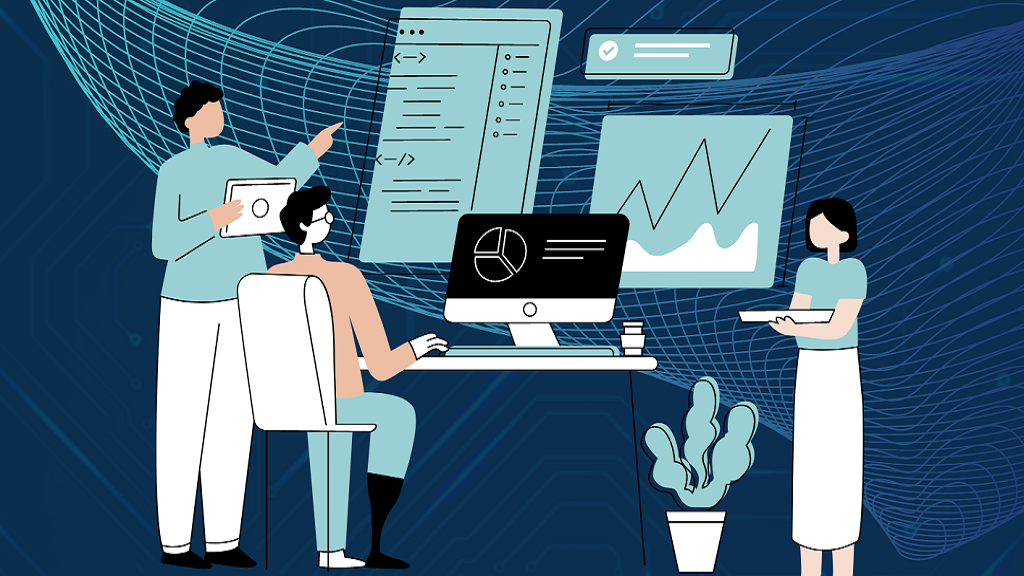
Artificial intelligence has come a long way in recent years, and one of the most exciting areas of research is in the field of image generation. Thanks to advancements in generative AI, it is now possible to create high-quality images from textual input using text-to-image diffusion models. In this article, we will explore these models in more detail, as well as the role that AIGC and Google are playing in advancing research in this area.
Understanding Text-to-Image Diffusion Models
Text-to-image diffusion models are a type of generative AI model that allows for the creation of high-quality images from textual input. These models work by starting with a random image and then iteratively refining it based on the textual input provided. This process continues until the generated image matches the input text as closely as possible. Compared to other types of generative AI models such as GANs, text-to-image diffusion models have been shown to produce higher quality images with greater fidelity to the input text.
The AIGC Google Partnership
The AIGC Google partnership is a groundbreaking collaboration that has the potential to accelerate the development of generative AI, particularly in the area of text-to-image generation. As a research organization with a strong focus on generative AI, AIGC brings its extensive expertise to the table, while Google provides the resources and infrastructure necessary for large-scale research projects.
One of the key objectives of this partnership is to develop more advanced models for text-to-image generation. Text-to-image generation involves using machine learning algorithms to create images based on written descriptions or prompts. While this technology has made significant advances in recent years, there is still much room for improvement. By collaborating with Google, AIGC hopes to push the boundaries of what is possible with text-to-image generation, creating more realistic, detailed, and accurate images than ever before.
Another important aspect of the AIGC Google partnership is the potential it has to advance the field of AI as a whole. With so many talented researchers and engineers working together, new breakthroughs are likely to emerge. These breakthroughs may not only be relevant to text-to-image generation, but could also have implications for other areas of AI, such as natural language processing, computer vision, and robotics.
Overall, the AIGC Google partnership is an exciting development in the field of AI research. By leveraging their complementary strengths and resources, these two organizations have the potential to achieve great things, paving the way for a brighter future powered by AI technology.

Tools for Text-to-Image Generation
One of the key benefits of the AIGC Google partnership is the availability of powerful tools for text-to-image generation. These tools, which are accessible through AIGC Google Login and Download, allow researchers to create high-quality images from textual input with relative ease.
Another product is Workflos. Workflos AI offers a suite of products that includes cutting-edge text-to-image generation solutions. Their technology leverages the power of artificial intelligence and machine learning to enable businesses to create high-quality visual content from textual input. With Workflos AI’s text-to-image generation tools, businesses can easily transform their written content into compelling visuals that capture their audience’s attention and drive engagement. However, it’s important to note that generating complex images with multiple objects or viewpoints can still prove challenging, and may require additional expertise or resources to achieve desired outcomes. Nonetheless, Workflos AI’s text-to-image solutions offer immense value to businesses looking to streamline their content creation process and produce visually stunning assets at scale.
However, there are some limitations to these tools, such as the need for large amounts of training data and the difficulty of generating complex images with multiple objects or viewpoints.
Applications and Implications of Text-to-Image Diffusion Models
Text-to-image diffusion models have rapidly gained popularity in recent years due to their ability to generate high-quality, realistic images from textual descriptions. These models can be used in a wide range of fields, such as art, design, advertising, and gaming. For example, artists can use these models to quickly visualize their ideas without spending hours creating sketches or prototypes. Designers can use these models to create compelling visual concepts for clients. In advertising, text-to-image models can be used to create eye-catching visuals that grab the attention of potential customers. In gaming, these models can be used to generate highly detailed game environments and characters.
However, there are also ethical implications to consider when it comes to AI-generated images. One major concern is the potential for these models to be used to create fake or misleading images. For example, malicious actors could use these models to create fake news stories or manipulate images to spread propaganda. This could have serious consequences for individuals and society as a whole.
Additionally, there is a risk that these models could perpetuate harmful stereotypes and biases if they are trained on biased datasets. For example, if a model is trained on images that primarily feature white individuals, it may struggle to accurately represent people of other races.
Given these concerns, it is important for AI developers to ensure that these tools are used ethically and responsibly. This includes taking steps to mitigate any potential negative impacts, such as developing algorithms that are less susceptible to bias and ensuring that models are not used to spread misinformation or harmful imagery. There is also a need for transparency around how these models are developed and trained, so that users are aware of the limitations and potential risks associated with using them.
In summary, while text-to-image diffusion models have great potential for a variety of applications, it is important for developers and users to carefully consider the ethical implications of their use and take steps to ensure that they are used responsibly.
Conclusion
The field of generative AI is advancing rapidly, and text-to-image diffusion models represent an exciting new development in this area. Thanks to the partnership between AIGC and Google, researchers now have access to powerful tools for creating high-quality images from textual input. As research in this area continues, we can expect to see even more impressive results and exciting applications for this technology.
